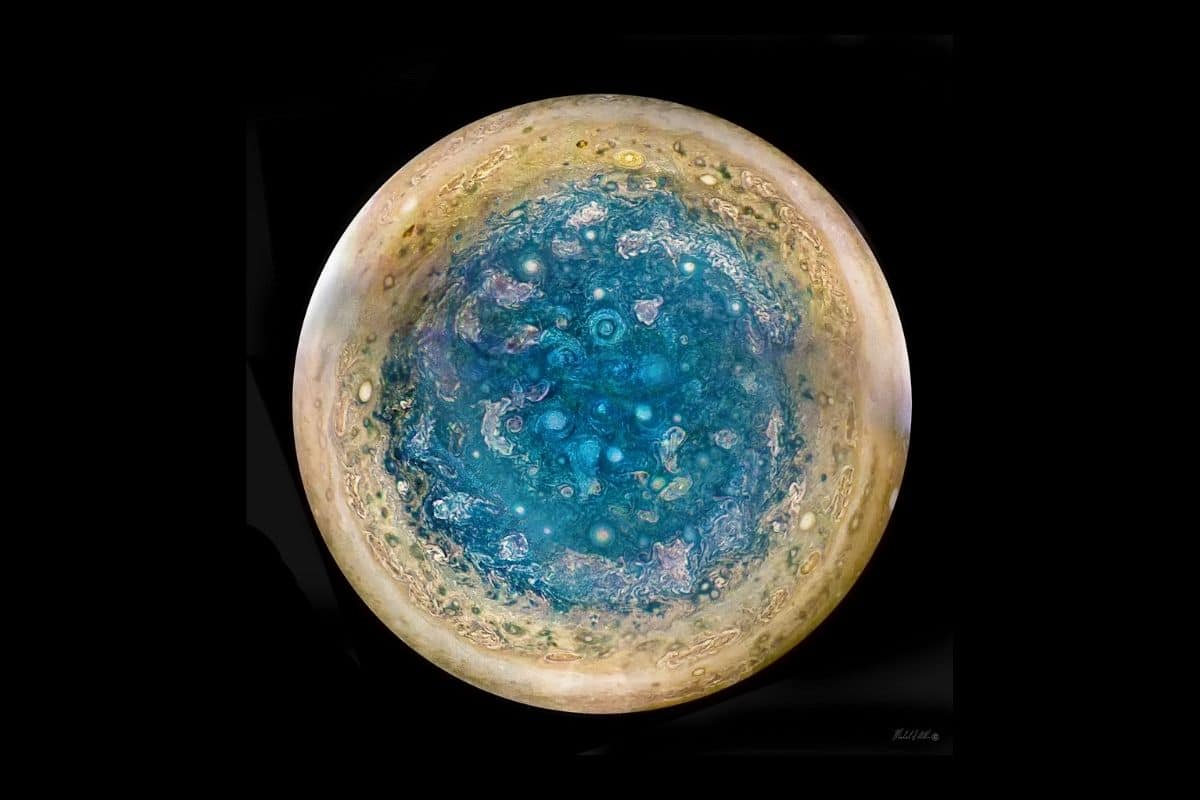

This summer, Juno has been orbiting Jupiter, the largest planet in our solar system, for six years now. In these six years, the spacecraft has already taken many beautiful pictures. Today we consider some cosmic masterpieces.
Juno can capture such stunning images of Jupiter because the spacecraft’s sensitive equipment is safely housed in a titanium vault. The walls of this safe block radiation, so that the instruments are exposed to little radiation. This is important, as Juno approaches the top of Jupiter’s clouds at a distance of 4,100 kilometers. In addition to a color camera (JunoCam), the spacecraft has a magnetometer, UV spectrograph, a charged particle detector, an instrument to perform gravity measurements, an infrared camera and a radiometer on board. Furthermore, Juno is equipped with 18,698 solar cells that together generate 400 watts: enough to keep Juno operational.
The five photos below were taken by the JunoCam. They are mainly pictures of Jupiter itself, as the wide-angle camera was not designed to photograph the Jovian moons. More details are only visible during flybys along moons. Due to the low resolution and because the compression takes place before sending, you can best compare this camera with a dashcam.
Turbulent South Pole of Jupiter
In the photo below you can see the south polar region of Jupiter. It is a composite photo of several images, which have been put together. The well-known cloud bands are missing. You do see several cyclones with a size of 10,000 kilometers here.

The most famous perpetual storm
Juno has already taken many pictures of the famous Great Red Spot. This is a perpetual storm that is visible even from Earth with a small telescope. Astronomers have been watching the storm shrink for several decades, but luckily we don’t have to worry that this eye-catcher of Jupiter will one day disappear. The photo below shows the Great Red Spot in true color. That is, if we were to visit Jupiter ourselves, the Red Spot would look something like this.

Below is another fantastic photo of Jupiter, but now the colors are slightly edited. In addition to the Great Red Spot, you can see another huge, oval-shaped storm above. It bears the name Oval AB.

No structure to recognize
When the colors of the photos are edited, it is striking how dynamic the atmosphere of the giant planet is. Apparently no line or structure can be recognized, as in the photo below. At the time the spacecraft took this photo, it was about 7,500 miles (12,326 kilometers) from Jupiter’s cloud tops. This picture never bores.

Gaping hole in the atmosphere
In 2019, Juno discovered a gaping hole in the cloud cover of the gas giant. Since dark colors in Jupiter’s atmosphere are often “deeper” than lighter shades, the researchers believe the mysterious black spot may be a deep gaping hole.

Oval storm on Jupiter
Below you can see two major storms on Jupiter. A storm has a beautiful oval shape. This photo was taken in 2021.

Stormy atmosphere with classic stripes
Finally, a beautiful shot of the stormy atmosphere of the South Pole. The classic bands and stripes are recognizable. The beautiful image is composed of four separate images captured by the JunoCam onboard the probe. Juno took the photos in 2020 when the spacecraft was between 49,500 and 100,400 kilometers above Jupiter’s cloud tops.

Source material:
Archive Scientias.nl Image at the top of this article: NASA